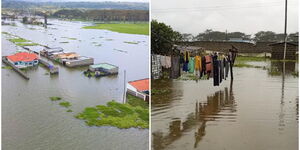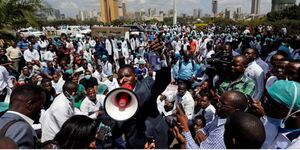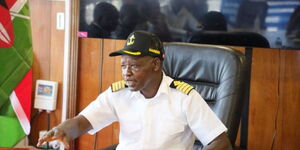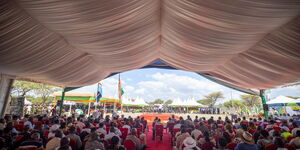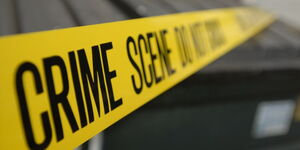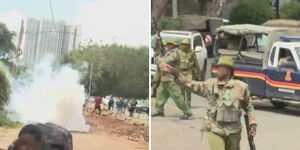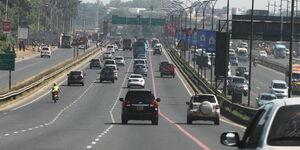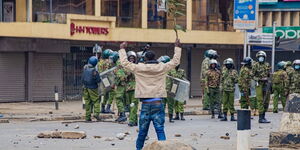A sandbox at a petrol station is a container filled with sand that is usually located near the gas pumps. Its purpose is to provide a safe and effective way for the attendants or customers to quickly deal with emergencies.
The box is usually red in colour and full of ordinary sand which is often used to attend to life-threatening situations at filling stations.
However, sandboxes are not supposed to replace or substitute other safety measures that are highly recommended by the Energy and Petroleum Regulatory Authority (EPRA).
1. Extinguish a small fire
If a fire ignites due to a fuel spill or for whatever reason, the sand in the box can be quickly used to smother the flames and prevent them from spreading.
The sand helps to cut off the oxygen supply to the fire and cool down the fuel that is burning.
Sand can be an effective way to extinguish a small fire caused by flammable liquids, such as gasoline or oil. Here are the steps to follow when using sand to extinguish a small fire:
i) Assess the situation: Before attempting to extinguish a fire, make sure it is safe to do so. If the fire is too large or spreading quickly, evacuate the area immediately and call the fire department.
ii) Get the sand: If a sandbox or bucket is available, use it to collect sand. If not, find the nearest sand or dirt and scoop it into a container.
iii) Apply the sand: Stand at a safe distance from the fire and pour the sand onto the flames. Cover the flames completely with sand to smother the fire and cut off the oxygen supply. Use a shovel or other tool to spread the sand evenly if necessary.
iv) Monitor the fire: Keep an eye on the fire to make sure it does not reignite. If necessary, add more sand to any remaining flames or hot spots.
v) Dispose of the sand: Once the fire is completely extinguished, the sand can be left in place to cool down the area. If it is necessary to remove the sand, use a broom and dustpan to sweep it up and dispose of it properly.
Remember, sand is only effective for extinguishing small fires caused by flammable liquids. For larger fires or fires caused by other sources, it's important to call the fire department and evacuate the area immediately.
2. Cleaning Fuel Spillages
In addition to being a fire safety measure, a sandbox at a gas station can also be used to clean up small fuel spills. The sand can be spread over the spill to absorb the fuel, which can then be scooped up and disposed of properly.
It's important to note that while a sandbox can be a useful tool in fire safety and spill cleanup at a gas station, it should not be used as a substitute for proper safety procedures and equipment.
Gas station attendants and customers should always take appropriate precautions when handling gasoline or other flammable liquids, such as wearing protective gear and using approved spill containment and cleanup materials.
It's important to note that fuel spillage at gas stations can be dangerous and can cause fires or explosions. If the spill is too large or spreading quickly, evacuate the area immediately and call the fire department.
Always follow proper safety procedures and use appropriate personal protective equipment when handling fuel spills.
3. Handwashing
The petrol station sandbox provides a place for customers to wash their hands after handling fuel or other materials. The sand can act as an abrasive, helping to remove any lingering dirt or oil from the skin.
Safety at Petrol Stations
As recommended by EPRA, safety at petrol stations is crucial to prevent accidents and injuries from occurring. Here are some tips to help ensure safety at petrol stations:
Turn off your engine: Turn off your car engine before refueling. Running engines can produce sparks that can ignite fuel vapors, causing a fire.
No smoking: Smoking should be prohibited at petrol stations, as the flame from cigarettes, matches, and lighters can ignite fuel vapors.
Keep your distance: Keep a safe distance from the fuel pump while refueling, and avoid leaning on or touching the pump while the fuel is being dispensed. This can reduce the risk of static electricity sparks that can ignite fuel vapors.
Use approved containers: Use only approved containers for carrying and storing fuel. Never use plastic bottles, as they can melt or deform and cause fuel spills.
Keep fuel spills contained: If a fuel spill occurs, notify the petrol station attendant immediately. Do not attempt to clean up the spill yourself, as it can be dangerous.
Store flammable materials safely: Keep flammable materials, such as lighter fluid, matches, and propane tanks, away from petrol pumps and fueling areas.
Keep children safe: Children should be kept away from petrol pumps and fueling areas, and should never be left unattended in a vehicle while refueling.
By following these safety tips, you can help to ensure that you and others are safe while refueling at petrol stations. It's also important to be aware of emergency procedures and safety equipment at petrol stations, such as fire extinguishers and emergency shutdown switches, and to know how to use them in case of an emergency.


